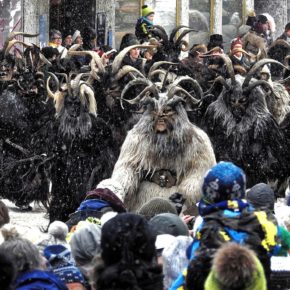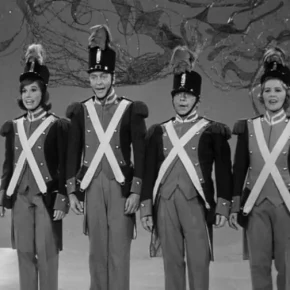I consider myself an endurance athlete: pushing myself for very long periods of time, testing my limits, riding hills long and steep, braving different climates and weather conditions.
Yet the “endurance athlete” flag seems to have been wrenched from the hands of us cyclists by those who compete in triathlon or long-distance running.
And it peeves me.
Perhaps the various doping scandals that have plagued cycling over the past decade – including the recent trials of Floyd Landis and Michael Rasmussen, and the ongoing “did-he-or-didn’t-he” treatment of Lance Armstrong – has something to do with it. Especially here in the United States, road cyclists of all types are looked down upon by casual onlooker and sports wonk alike. “There can’t be any possible way that a person can ride 100 or more miles on a bike, over big mountains and the like, without some kind of cheating,” they say.
I admit that the PR damage done by professional cyclists who must win at any cost is quite significant. But just because there are a few bad apples in the mix, there is no good reason to discount the efforts put in by the rest of us, both pros and hobbyists.
We train hard. We spend hour after hour perched on a tiny saddle, riding on narrow, hard tires, often alone, through hot heat and icy cold. These are hours where we are removed from our family and friends (unless they, too, have the desire to go the distance on a bicycle), hours of the best weather of the day (especially in the summer), hours that add up to days apart from the rest of the world.
And what do we (especially in the United States) have to show for it? There are precious few cyclosportives in these parts, which is a shame. Unlike the organized century rides that are offered all over the place, proper cyclosportives are sanctioned by the Union Cycliste Internationale – which means they’re usually timed, and adhere to a specific set of requirements in terms of organization and rules. They’re not races, nor are they randonnée rides (ultra distance rides, called brevéts, where there are time limits and increasing distance goals). Perhaps Mountains of Misery is as close as we get to a proper sportive here in the States.
But here in the States, we tend to get the organized century rides – which are great fun, but because they aren’t officially sanctioned, they don’t carry the same weight. And the randonneurs are such a tiny sub-set of endurance cycling as to go relatively unnoticed.
The racing scene in the States is largely based around the criterium races: basically a full-on sprint on a short, closed course that takes on a bit of a roller derby atmosphere. It’s great for spectators, but not really attractive to the media or the public at large (again, the doping scandals enter into the picture: who wants to see a bunch of pros who “must be doping?”). And since it comes across as a big sprint (most crits are less than 60 miles in total distance), most people don’t see the endurance aspect.
And the big stage races here in the States – the Tour of California and the Tour of Georgia – get little coverage in the mainstream media. While marquee marathons (New York and Boston) and triathlons (Escape from Alcatraz and Ironman Kona) get full network coverage (including the “human interest sob stories” that make me want to vomit – show me the damn racing!), endurance cycling events get nary a mention in the news. The Tour of California is carried on Versus, the Tour of Georgia on Universal Sports (a primarily internet-based network, formerly known as WCSN) – not really the most in-your-face outlets. The Race Across America and other great events – like the Mt. Washington Bicycle Hillclimb, the Leadville 100, or the few timed, sportive-style events – get almost zero coverage outside of the cycling trade magazines and websites. Even the Tour de France is subject to weekly network recaps (though Versus shows live daily coverage) – the Giro d’Italia and Vuelta a España get far less.
Heck – the Race Across America gets better coverage in the European Union than in the United States!
So the triathletes and runners get the U.S. public’s nod as the “real” endurance athletes, while cyclists who ride hundreds of miles per week, climbing tens of thousands of feet in the process, spending hours on lonely roads (and sometimes on busy roads, dodging careless drivers and their petrol-burning steeds), working toward goals that are every bit as challenging as their running and tri brothers and sisters.
Speaking on behalf of many cyclists: we feel slighted.
Yes, there’s been some very public scandal amongst the pro cycling ranks. But one-hundred-something busted or implicated riders do not represent the whole of cycling. The majority of us are just like the folks who lace up their running shoes first thing in the morning, or slip into the pool before dawn to crank out 2,000 meters: we’re simply folks who are out to test our body’s ability to cope, adapt and (hopefully) thrive under adverse conditions. We do this while facing the same everyday challenges as most people: keeping up with our training while juggling work, family, friends and life’s other obligations.
We, too, would like recognition from society, at large – especially here in the United States.
We, too, are endurance athletes. We fight just as much pain, just as many physical and mental challenges and obstacles as our fellow endurance enthusiasts.
I respect my running friends and my triathlete friends to the hilt. They are amazing athletes, amazing people, and true endurance enthusiasts. They work hard and compete harder.
And so do many cyclists, myself included. And I want to take back part of the “endurance” label for my fellow cyclists.
So when you think “endurance,” don’t stop at marathon running or triathlon. Remember the cyclists, too.















Dianna (running chick)
1 July 2008 — 21:23
I couldn’t agree more. As it is, running and triathlon get very little media coverage compared to other sports…leaving cycling at the very bottom of the list. I believe that the bias goes beyond just the scandals, as evidenced by the things that are shouted (or thrown) out car windows as they pass by a group of cyclists sharing the road. Never happens to me when I run (or swim, heh)…only on the bike. I cannot get my brain around the “Why?” of it all. Nice post!
jeff
4 August 2008 — 12:04
hear hear.
smsmh and i have the debate constantly of which requires more endurance or fitness; gymnasts or tour de france gc contenders [don’t let me get started on subjectively scored events in the olympics vs. TRUE sporting events]. i contend that an endurance cyclist could develop the dexterity to perform gymnastic events more quickly than a gymnast could develop the endurance to ride a bike for 20+ days through the alps and pyrenees. so, if [from my perspective] endurance cycling is so much more difficult and by extension, respectable, then why does gymnastics get so much more airtime? same goes for any other sport, really.
what needs to be done is that the cycling community needs to tap into the teenybopper community. get those teenage girls putting up posters of their cycling heroes in colourful, tight team kit and watch the nation follow. 😉
@flipperhead – if you’re not having things thrown at you/hit over the head/punched in the stomach while swimming, then you’re not training correctly. teehee